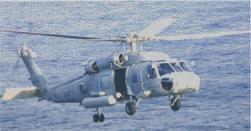Hospital Corpsman Sickcall Screener's Handbook
BUMEDINST 6550:9A
Naval Hospital Great Lakes
1999
Male Genitalia
Allotted Time:
|
 |
|
Operational Medicine CD
Text, images,
videos and manuals
The essential text for military healthcare providers
www.brooksidepress.org |
References:
Instructional Aids:
Terminal Learning Objective: To recognize potential problems and perform the needed exam.
Enabling Learning Objective:
-
Identify different components of the male genitalia. -
Identify disorders of the male genitalia. -
Identify disorders of the anus and rectum.
-
Penis
-
Inspection
-
skin: obvious scars, lesions, etc.
-
foreskin: retract foreskin to detect chancres, carcinoma.
-
Smegma: cheesy white material, accumulates under the foreskin. Sign of poor hygiene.
-
Phimosis: tight prepuce that can not be retracted.
-
Paraphimosis: tight prepuce that can be retracted but gets caught behind the glans and cannot be returned.
-
Glans
-
ulcers
-
balanitis: inflammation of the glans
-
balanoposthitis: inflammation of the glans and prepuce
-
Base of penis
-
excoriations
-
check pubic region for nits, lice (crabs).
-
Urethral Meatus:
-
location
-
hypospadias: Meatus displaced to inferior surface.
-
epispadias: Meatus displaced to superior surface.
-
Urethral Discharge
-
Compress glans between thumb and index finger to express material.
-
Gonococcal urethritis: usually profuse and yellow.
-
Non-gonococcal urethritis: scanty, white or clear.
-
Gram stain discharge.
-
Palpation
-
Palpate shaft of penis between thumb and first two fingers.
-
Replace prepuce if retracted.
-
Note presence of induration.
-
The Scrotum:
-
Inspection
-
Contour for lumps or swelling.
-
Scrotal skin for nodules, ulcers, excoriation or inflammation.
-
Absent testicle.
-
Identify each spermatic cord and follow course to the external inguinal ring.
-
Transilluminate any scrotal swellings in dark room with strong light. Swelling contains serous fluid which transilluminates.
-
Palpation of testicles should be smooth throughout surface. Testicles should be of equal size.
-
Hernias:
-
Inspection
-
Observe inguinal and femoral areas for bulges while patient strains. This is suggestive of a hernia.
-
Palpation
-
Use right hand for patients right side and left hand for patients left side.
-
Follow spermatic cord to external inguinal ring.
-
Have the patient cough or strain.
-
A mass that touches the examining finger indicates a hernia (inguinal type).
-
Inspect/palpate anterior thigh in the region of the femoral canal noting tenderness/swelling.
-
Differentiate large scrotal mass
-
With patient lying down, palpate mass in scrotum.
-
If reduces, suspect hernia.
-
If you can get fingers around the mass suspect hydrocele.
-
Bowel sounds auscultated, suspect hernia.
-
Incarcerated hernia: contents cannot be returned to abdominal cavity.
-
Strangulated hernia: blood supply is compromised.
-
Disorders of the male genitalia
-
Penis
-
Syphilitic chancre: dark red, painless ulcer. Has no tender inguinal lymphadenopathy.
-
Genital herpes: cluster of small vesicles, followed by shallow, painful, nonindurated ulcers on red bases. -
Venereal warts: Rapidly growing, excrescences that are moist and often malodorous. -
Carcinoma of the penis: indurated nodule or ulcer that is nontender. Limited almost always to non circumcised patients.
-
Scrotum
-
Varicocele: Varicose veins of the spermatic cord. Fells like a bag of worms.
-
Hydrocele: non tender, fluid filled mass.
-
Spermatocele: painless, mobile cyctic mass just above the testes.
-
Cancer: painless nodule on testicle. Young active duty are high risk age group - teach self examination.
-
Epidiymitis: Tender, swollen, epididymis. Scrotum may be red and swollen.
-
Acute orchitis: inflamed, tender, swollen testes.
-
Testicular torsion: Twisting of the testicle on the spermatic cord. Acutely painful, tender and swollen. This is a surgical emergency.
-
Cryptorchidism: undeveloped scrotum. Palpate for both testicles. Refer to MO.
-
Anus and Rectum
-
Exam
-
Position patient on left side with legs slightly flexed.
-
Spread buttocks apart with left hand.
-
Inspect perianal areas for lumps, ulcers, inflammation, rashes, or excoriations.
-
Lubricate gloved index finger and insert gently toward umbilicus as patient relaxes sphincter.
-
Turn hand to examine anterior surfaces and prostate, feel to top of gland.
-
Note other masses.
-
Withdraw fingers and test stool for occult blood.
-
Abnormalities of anus and rectum
-
Pilonidal cyst/sinus tract
-
Midline superficial to coccyx or lower sacrum.
-
Identified by opening of sinus tract.
-
Erythema may be present and a small tuft of hair.
-
Anorectal fistula
-
Inflammatory tract from anus or rectum to skin.
-
Anal fissure
-
Painful oval shaped ulceration usually midline posterior.
-
Sentinel skin tag associated with it.
-
Hemorrhoids: varicose veins of the rectum.
-
external - below anorectal line.
-
May be uncomplicated, vary in size
-
Thrombosed hemorrhiods are tender, bluish, shiny ovid masses at the anal margin.
-
More discomfort may be present than internal.
-
internal - above anorectal line/covered by mucosa.
-
Carcinoma of the rectum
-
Firm nodular mass with central ulceration and rolled edges.
-
Polypoid masses may be malignant.
-
Carcinoma of prostrate
-
Irregular, hard single, multiple, or enlarged rock hard nodular surface and /or fixed mass.
-
Benign prostate hypertrophy
-
Smooth, firm, symmetric enlargement
-
Sometimes loss of palpable median sulcus
-
Prostatitis:
-
swollen, enlarged
-
very tender
-
"boggy" to palpation
-
associated with fever
DIAGRAMS OF THE MALE & FEMALE GENITALIA
|
|
Approved for public release;
Distribution is unlimited.
The listing of any non-Federal product in this CD is not an endorsement of the
product itself, but simply an acknowledgement of the source.
Bureau of Medicine and Surgery
Department of the Navy
2300 E Street NW
Washington, D.C
20372-5300 |
Operational Medicine
Health Care in Military Settings
CAPT Michael John Hughey, MC, USNR
NAVMED P-5139
January 1, 2001 |
United States Special Operations
Command
7701 Tampa Point Blvd.
MacDill AFB, Florida
33621-5323 |
*This web version is provided by
The Brookside Associates Medical Education Division. It contains
original contents from the official US Navy NAVMED P-5139, but has been
reformatted for web access and includes advertising and links that were not
present in the original version. This web version has not been approved by the
Department of the Navy or the Department of Defense. The presence of any
advertising on these pages does not constitute an endorsement of that product or
service by either the US Department of Defense or the Brookside Associates. The
Brookside Associates is a private organization, not affiliated with the United
States Department of Defense.
Contact Us · Other
Brookside Products

|
|
Operational Medicine 2001
Contents
|

|
 |
|
FMST Student Manual Multimedia CD
30 Operational Medicine Textbooks/Manuals
30 Operational Medicine Videos
"Just in Time" Initial and Refresher Training
Durable Field-Deployable Storage Case |
|





